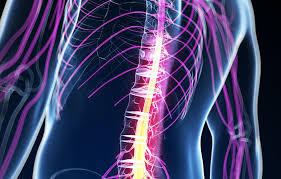Key Takeaways
- Understanding the typical causes of spinal cord injuries can help in preventing them.
- Simple lifestyle changes can significantly reduce the risk.
- Using proper techniques in sports and everyday activities is crucial.
- Car safety measures can prevent many spinal cord injuries.
- Workplace safety protocols are essential to avoid potential hazards.
Common Causes of Spinal Cord Injuries
Spinal cord injuries can arise from various causes, with the most common being falls, car accidents, sports injuries, and acts of violence. Understanding these causes is an essential step in preventing them. Seeking guidance from a spinal cord injury lawyer in Gainesville can also provide valuable insights and support, helping you understand the nuances of injury prevention and legal support if needed.
Spinal cord injury lawyers in Gainesville specialize in advocating for individuals who have suffered severe back injuries due to accidents or negligence. These legal professionals work diligently to secure compensation for medical expenses, lost wages, and long-term rehabilitation needs. With their expertise, they aim to provide crucial support and representation to help clients rebuild their lives after devastating injuries.
According to CDC’s Spinal Cord Injury Statistics, approximately 17,000 new cases of spinal cord injury happen every year in the United States. Awareness of these statistics emphasizes the importance of taking preventive measures seriously. Falls are particularly prevalent among older adults, making it crucial for homes with older adults to be equipped with safety features. Meanwhile, car accidents and sports injuries are common among younger and middle-aged individuals, highlighting the need for proper safety protocols across different age groups.
Simple Lifestyle Changes
Minor daily routine adjustments can significantly reduce your chance of spinal cord injury. For instance, using non-slip mats in the bathroom and securing rugs can reduce the risk of falls at home. Additionally, ensuring that living spaces are well-lit and free of tripping hazards is vital. These adjustments can substantially affect everyday safety, particularly in homes with children or elderly residents.
Maintaining a healthy weight, getting enough exercise, and building your core muscles can all help you become more balanced and avoid falling. Simple efforts like these can have a profound impact on overall spinal health. Regular physical activities enhance physical strength and improve coordination and flexibility. This reduces the likelihood of awkward movements that could lead to spinal injuries. Whether it’s a daily walk, yoga, or engaging in other forms of exercise, maintaining an active lifestyle is essential for spinal health.
Proper Techniques in Sports and Everyday Activities
Whether you are an athlete or someone who loves recreational activities, using the proper techniques can significantly prevent injuries. For example, use your legs and keep your back straight when lifting heavy objects. This reduces the strain on your spine and prevents potential injuries. Such techniques are not limited to athletic activities but apply to everyday tasks like carrying groceries or moving furniture.
Sports such as football and gymnastics should always be performed with appropriate gear. Helmets, padding, and braces can offer essential protection. More importantly, proper training and conditioning are critical to safeguard against injuries. The significance of these practices should be emphasized by coaches and teachers. Furthermore, adherence to sportsmanship rules and avoiding overexertion are critical in preventing spinal injuries, as aggressive or fatigued players are more prone to accidents.
Car Safety Measures
One of the leading causes of spinal cord injury is automobile accidents. Ensuring that you and your passengers always wear seat belts can make a significant difference. Properly installing child safety seats is also crucial. Following these measures can substantially lower the risk of injuries during accidents.
According to NHTSA’s Seat Belts Safety Information, seat belts saved an estimated 14,955 lives in 2017. Regularly checking and maintaining your vehicle, including brakes and tires, can also prevent accidents. Maintaining the functionality of your car lowers the risk of accidents caused by malfunctions. Drivers should also be cautious of external factors such as weather conditions and road hazards to ensure safety.
Workplace Safety Protocols
Workplaces, especially those involving heavy machinery or physical labor, have their own set of risks. Adhering to safety protocols and wearing the necessary protective gear can mitigate these risks. Regular training and safety drills should be mandatory in such environments to keep employees informed about potential hazards and prevention strategies. Structured training programs and periodic refresher courses are essential in maintaining high safety standards.
Employers must also conduct regular safety audits and provide ergonomic tools and equipment. This reduces the possibility of spinal injuries and guarantees the safety of the job. An ergonomic chair, for instance, can reduce the strain on an individual’s back during prolonged periods of sitting, while proper lifting equipment can prevent manual handling injuries. Safety measures and conducive work environments not only prevent spinal injuries but also enhance overall employee well-being and productivity.
The Importance of Regular Check-Ups
Frequent medical examinations can assist in spotting any early warning indicators of problems that could result in spinal cord damage. It’s essential to immediately address any persistent back pain or discomfort through professional consultation. Preventing severe injuries requires early detection and response. Medical professionals can provide tailored advice and prescribe exercises, therapy, or lifestyle changes to help mitigate risks.
Physicians are able to offer you individualized guidance and recommend preventative activities or treatments based on your unique requirements. Regular follow-ups ensure that any potential issues are promptly addressed. By keeping an eye on pre-existing disorders and getting suggested screenings, you may aid in early detection and treatment, which can save minor problems from getting worse and becoming serious spine problems.
Educating Yourself and Others
The importance of awareness and education in preventing spinal cord injuries cannot be overstated. Stay informed through reliable sources and share this information with family and friends. Collective vigilance and responsibility can significantly reduce the incidence of such injuries. Knowledge-sharing not only benefits individuals but also creates a ripple effect that promotes a culture of safety in the community.
Workshops, community programs, and online resources are excellent ways to educate yourself and others. Sharing knowledge builds a more informed and safer community. Engaging in local safety campaigns and participating in educational forums can further spread awareness. Empowering oneself and others with information enhances the collective ability to prevent spinal cord injuries and foster a safer environment for everyone.
Conclusion
Preventing spinal cord injuries requires a multifaceted approach that includes understanding the causes, making lifestyle adjustments, and following safety protocols in various aspects of daily life. By taking these precautions, we can significantly reduce the risk and ensure a healthier, safer life for ourselves and our loved ones. Conscious efforts in adhering to safety measures and fostering awareness in communities contribute to a significant decline in the occurrence of spinal cord injuries, ensuring a robust and healthier society.




